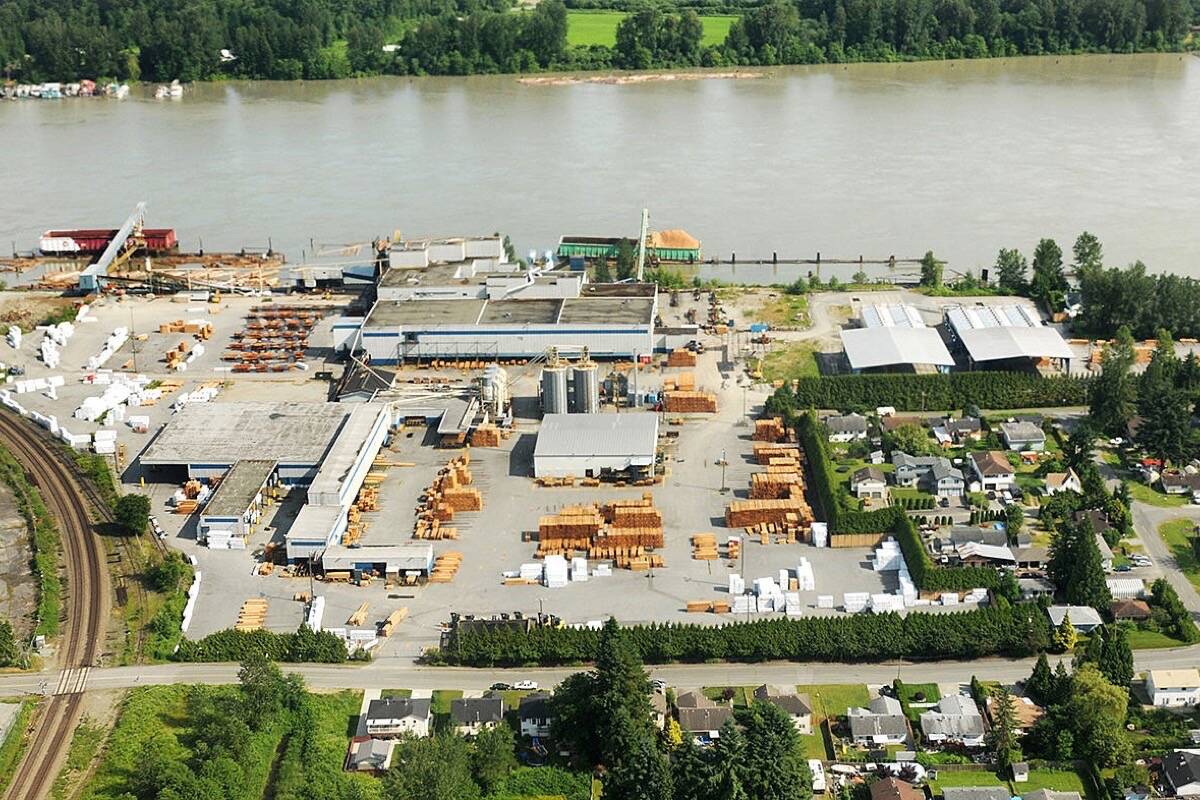The Katzie First Nation says the former Hammond Cedar Mill desecrated their historic village site and burial ground. The band has long wanted to reclaim the land, and said a proposed new development would further aggrieve their people.
Interfor sold the 11-hectare site to Conwest Development for approximately $40 million, and the company plans to re-develop the site for new industrial operations.
The Katzie claim the property is rightfully theirs, and now want to lead a study of where there ancestors are buried there, and how much environmental damage has been done. On Aug. 18, the Katzie wrote a letter to B.C. government ministers asserting their claims to the property. The letter says the site, which they call both cxwi’t and Katzie Village Site Port Hammond, was a home of their people.
“Our ancestors resided at cxwi’t continuously, intensively and exclusively since time immemorial, and they continue to hold this space as their sacred burial site within what is known as the Hammond Mill,” said the letter.
“We do not forget our ancestors just because they are unseen or covered with pavement and machinery,” says the eight-page letter. “We very much honour their space. We have lived with them being disrespected and dehumanized for far too long.”
That the site was an ancient settlement is well established.
Over a century ago, the Royal Society of Canada took an interest in the site for its archaeological assets. The society recorded there was a Katzie settlement along the Fraser River, from the Hammond mill site to the current Katzie Reserve land, and moving inland between 50 and 100 meters from the river’s edge. It stretched across some 1600 meters of river bank.
In 1897 and 1898, investigation of the site found stone artifacts, shell heaps and burial mounds, as Harlan Smith, a noted anthropologist in early Canada, investigated the former village.
It was subject of a modern study in 2000, before a kiln replacement project undertaken by the cedar mill. A great number of artifacts were found, including 1,396 stone artifacts. Found at the site have been skeletal remains, a carved bone club, projectile points, hand mauls, knives, bone and antler points, decorative items, woodworking tools, weights used on fish nets, bowls, pipe fragments, stones used for boiling, and more.
An SFU Archeaology Press article says “future systematic investigations… would undoubtedly provide a great deal more information about human behaviour and activities that transpired at this important site.”
“Katzie never ceded or surrendered cxwi’t. Katzie was forced off this land by the Crown, who then sold cxwi’t to settlers,” said the Katzie letter. “From 1910 to 2019 a lumber mill operated at our sacred burial ground within cxwi’t, and through mill operations, our ancestors were disturbed, desecrated and the land at waters at cxwi’t have been contaminated.”
“In 2019, when we learned that the current mill operator, Interfor, was closing the mill and divesting of this property, we initiated discussions to reclaim our title to this land.”
They said the sale to Conwest, and the redevelop the site “will further entrench grievous impacts to our rights, title and cultural wellbeing suffered over the past six generations.”
READ ALSO: 200 out of work as Hammond Cedar to close
Interfor had suggested the Katzie enter a development partnership with Conwest, and the band responded that such a partnership would need to be endorsed by its community through referendum, said the letter. A partnership offer was put to referendum, but was defeated.
The Katzie instead planned to “consider options to pursue an Aboriginal title claim to our sacred burial ground at cxwi’t.”
The letter outlines that any partnership discussions between the companies and the Katzie should not be considered consultation.
The band also talks about contamination of the site from industrial development, including overland seepage of solvents, waste oils, chemicals and PCBs.
The Vancouver Fraser Port Authority owns the shoreline, and leases it to Conwest, which owns the upland portion of the site.
Ben Taddei, the chief operating officer of Conwest, said his company will meet with the Katzie and government officials.
“It’s a process we’re working through, and we’re doing that in good faith,” said Taddei.
“Our intention has always been to work with the Katzie, and other levels of government.”
He said the property is zoned industrial, and the developer plans to build it out as an industrial zone. The development will require fill to be brought to the site.
Taddei said Conwest has not disturbed the ground since purchase, but has submitted applications to the BC Archaeology Branch, which must approve any ground disturbance. Part of that process will include consultation with First Nations.
In addition, Conwest has retained the services of Katzie Development Limited Partnership, an economic development firm owned and operated by Katzie First Nation. They have provided two full-time employees to the project, paid for by Conwest, to ensure oversight of the demolition of the mill. This is done to prevent any ground disturbance.
EDITOR’S NOTE: Katzie Chief Grace George and her council declined to be interviewed for this story, noting the letter was not intended for a public audience, and was not sent to The News by the Katzie. The letter was sent to the attention of the ministers of Indigenous Relations, Environment and Forests, and was copied to 12 other involved parties.
READ ALSO: Squamish First Nation breaks ground on large-scale Vancouver rental housing development
Have a story tip? Email: ncorbett@mapleridgenews.com
Like us on Facebook and follow us on Twitter.

